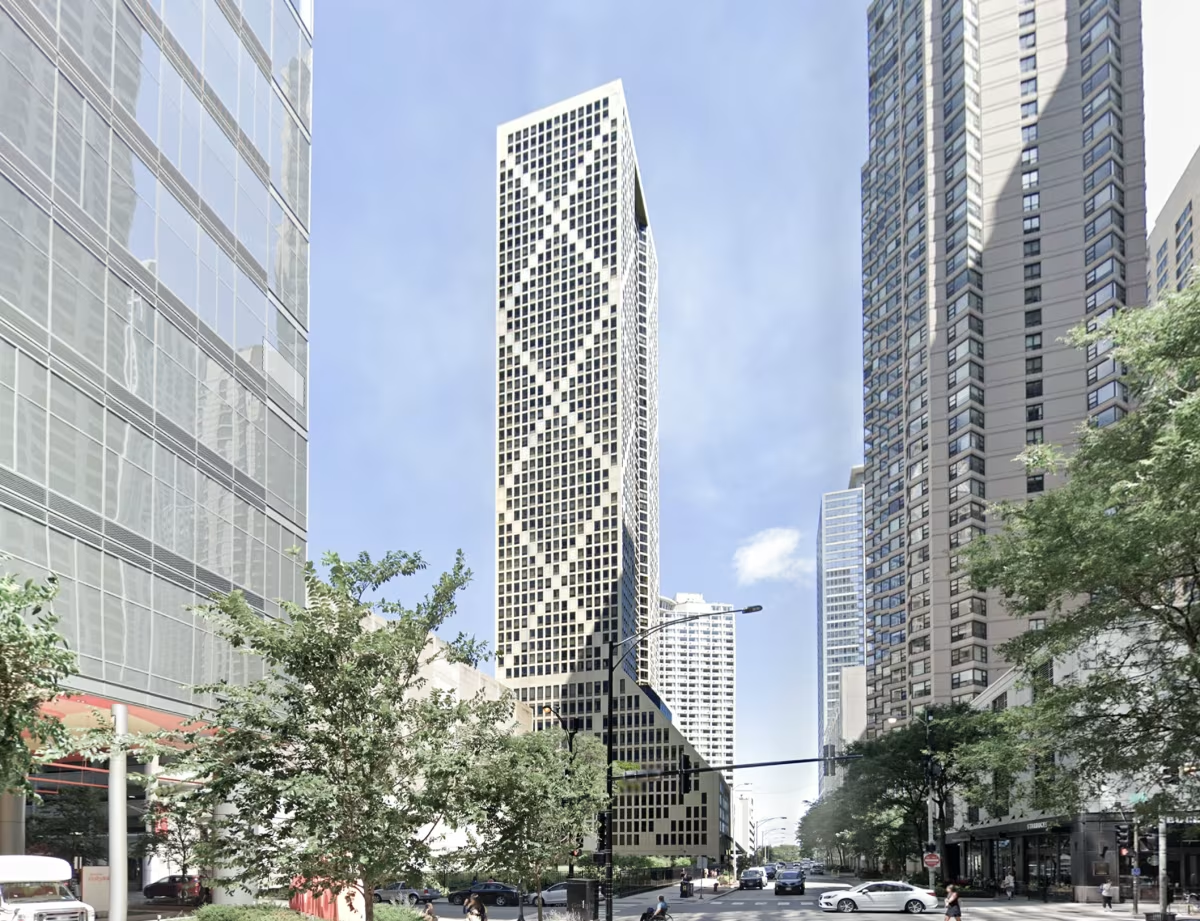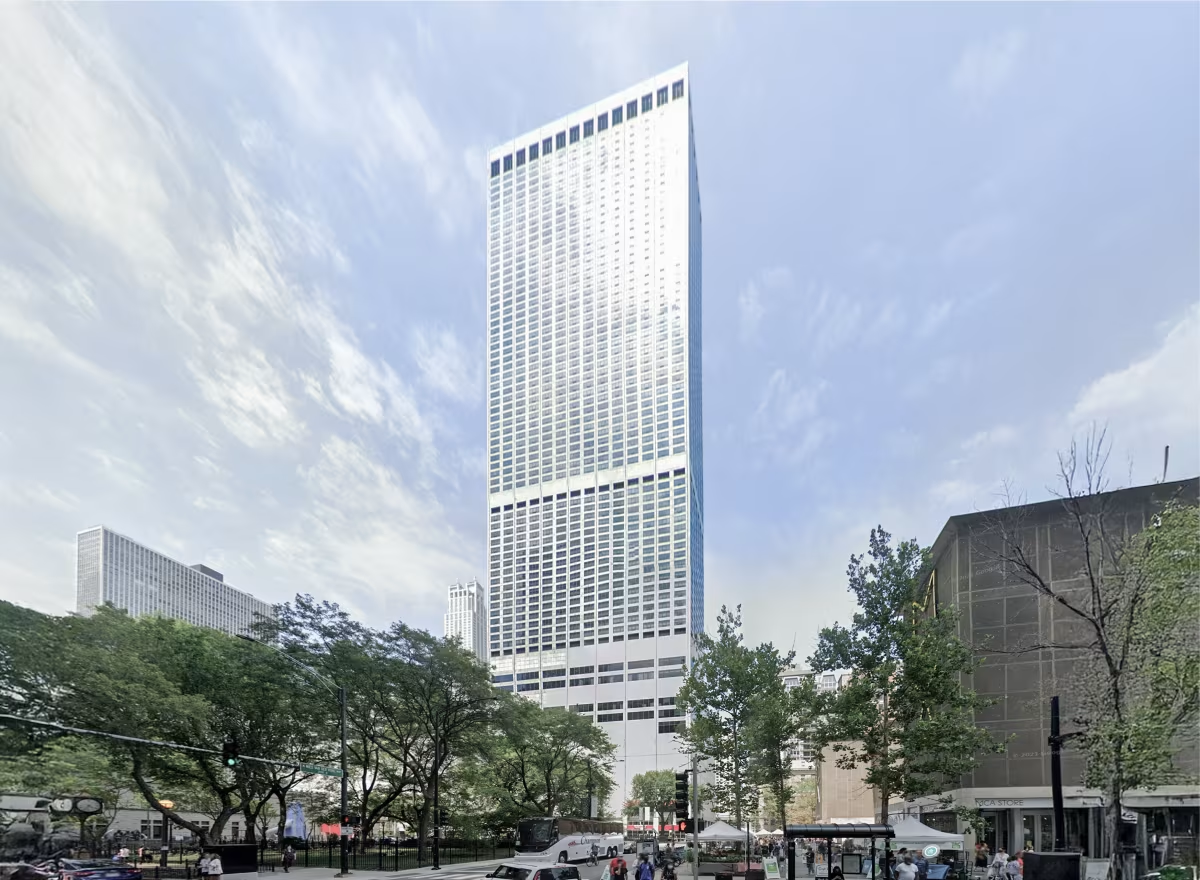Onterie Center vs Water Tower Place


Comparing the Onterie Center and the Water Tower Place is interesting because they both rise in Chicago, IL, yet they were conceived by two different design teams, Skidmore, Owings & Merrill and Loebl Schlossman Bennett and Dart, and were completed at different points in time. They were finished more than a decade apart.
This contrast within the same city allows us to see how different creative minds interpreted the evolving needs of Chicago across time.
Let's take a closer look!
Height & Size
The Water Tower Place is clearly the larger tower of the two, both in terms of height and number of floors. It rises to 860ft (262m) with 74 floors above ground, while the Onterie Center reaches 571ft (174m) with 60 floors above ground.
Of course, each project may have faced different briefs or regulatory constraints, which we don't really know about and could also explain the outcome.
Architectural Style
Both the Onterie Center and the Water Tower Place were designed in line with the aesthetic conventions of the Modern style.
Both buildings were completed when the Modern style was already past its peak. This makes them feel like late echoes of the movement, more reflective of continuity or nostalgia than of cutting-edge design at the time.
Uses
Both towers follow a mixed-use program. The Onterie Center combines residential, commercial, retail and hotel, while the Water Tower Place integrates hotel, residential and retail. Notably, both include residential, retail and hotel as part of their program.
Both towers incorporate hotels as part of their program. The Onterie Center features a -star hotel with 101 rooms, while the Water Tower Place includes a 5-star hotel with 435 rooms. For more details, see the official website of the Onterie Center . You can also visit the official website of the Water Tower Place.
In terms of capacity, the Onterie Center offers 594 apartments, while the Water Tower Place provides 360 units.
The Onterie Center also provides 363 parking spaces.
Structure & Facade
The two buildings opted for different structural and facade solutions.
The Onterie Center uses a Trussed Tube system, which , while the Water Tower Place uses a Frame system, that relies on a regular grid of columns and beams to sustain its weight.
And when it came to the facade, the Masonry went with a Masonry facade, which features a heavy masonry skin that gives it a more clasical look, while the Water Tower Place opted for a Window Wall facade, that uses panels fitted between floor slabs, leaving slab edges visible.
| Onterie Center | Water Tower Place | |
|---|---|---|
| Skidmore, Owings & Merrill | Architect | Loebl Schlossman Bennett and Dart |
| 1984 | Construction Started | 1972 |
| 1986 | Year Completed | 1976 |
| Modern | Architectural Style | Modern |
| Mixed | Current Use | Mixed |
| 60 | Floors Above Ground | 74 |
| 174 m | Height (m) | 262 m |
| 594 | Residential Units | 360 |
| Trussed Tube | Structure Type | Frame |
| Reinforced Concrete | Vertical Structure Material | Reinforced Concrete |
| Concrete And Steel | Horizontal Structure Material | Reinforced Concrete |
| Yes | Facade Structural? | Yes |
| Concrete, Glass | Main Facade Material | Marble, Glass |
| Chandra K. Jha | Developer | Philip Morris Klutznick |
| Skidmore, Owings & Merrill | Structural Engineer | C.F.Murphy Associates |
| IL | State | IL |
| Chicago | City | Chicago |
| 441 East Erie St | Address | 835 Michigan Av |